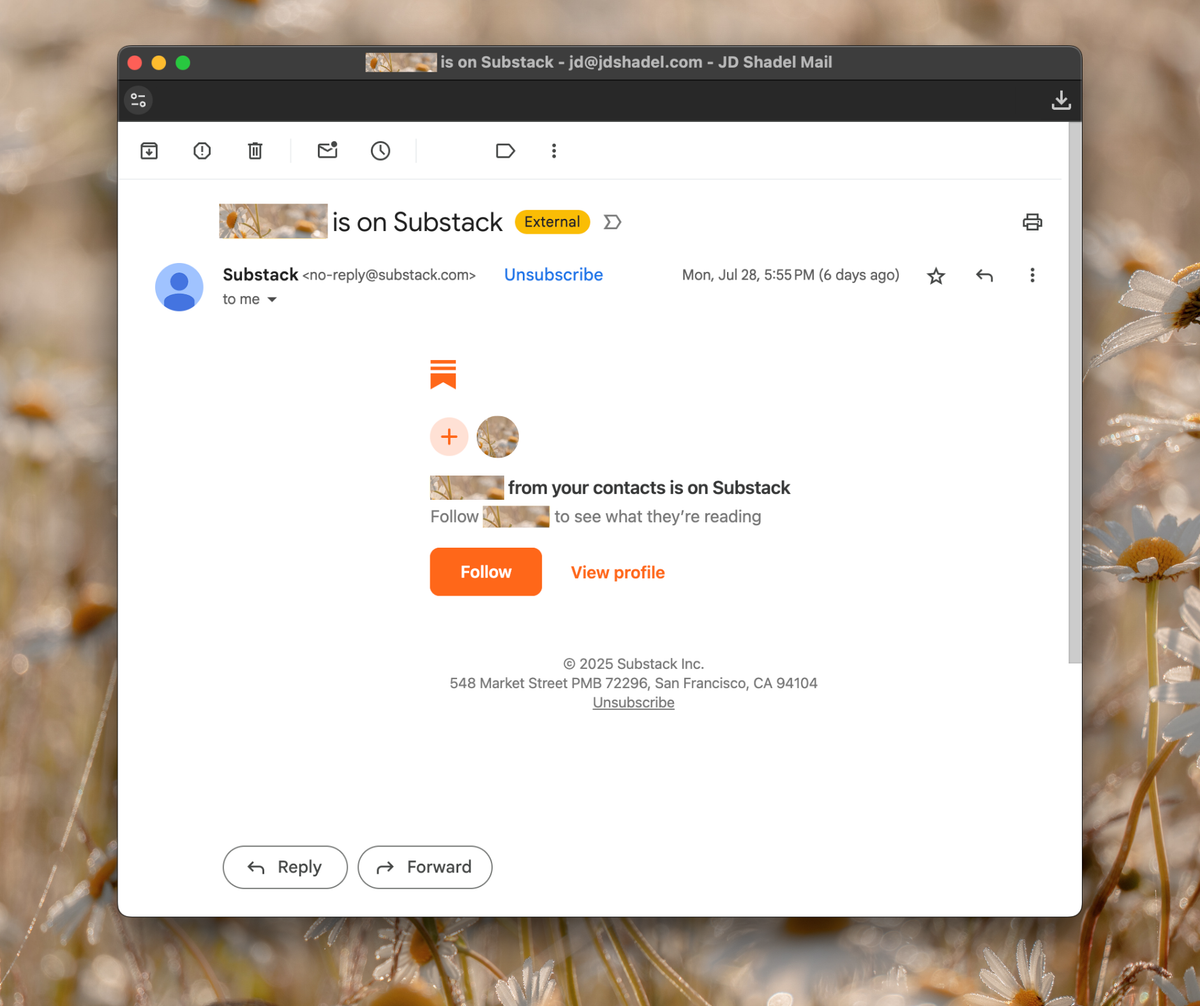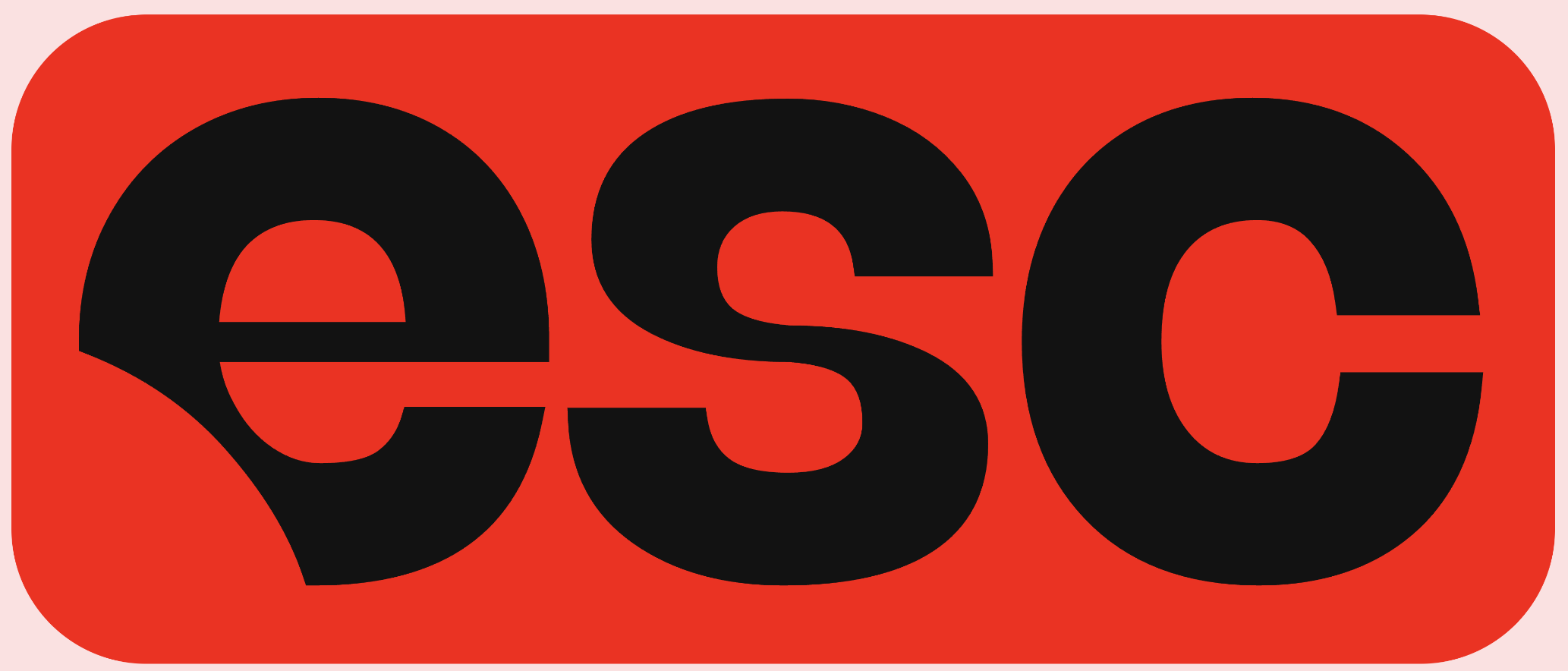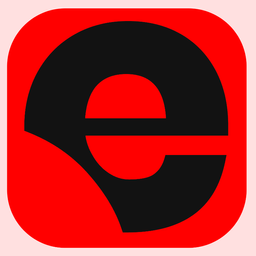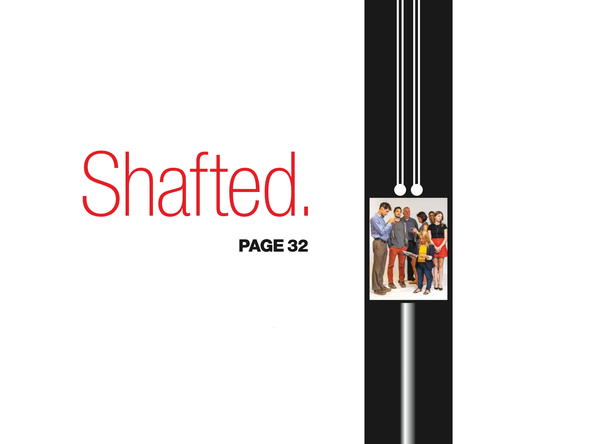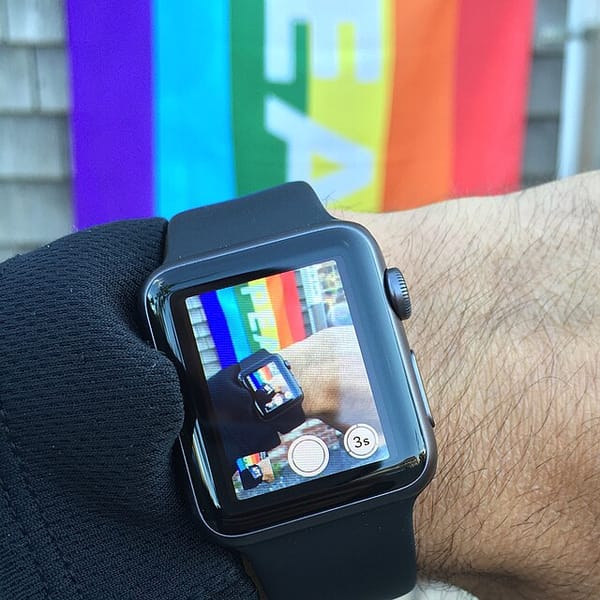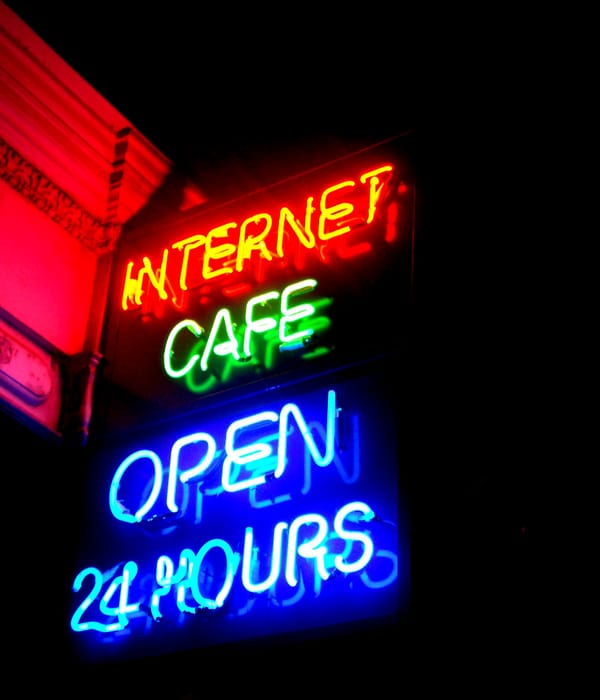Can we create the media future we want to read? 33 journalists band together to find out
Your TL;DR Briefing on things worth tracking — and talking about over your next power lunch. *Wink.* This time the thing is the Back Indie Media Drive, Project C’s newsletter merger and the new new media ecosystem emerging beyond Substack’s walled garden.

Favor: Could you share an early reader testimonial? Enjoying ESC KEY .CO? Could you help me by writing a quick one- or two-sentence testimonial? It's free, and really helps! (Thanks to everyone who has shared so far! It's been a hoot!)
The thing is:
A decade ago, if you wanted to launch your own reader-funded publication, you were either installing some newly launched plugin (like Memberful or Steady) to a WordPress blog, then sending emails using an email client like Mailchimp, and installing a gazillion other plugins to create a workable small media business on the web. There were a few success stories, including tech site Stratechery by analyst Ben Thompson, but this was largely the wild west. In 2017, a New York University professor, Jay Rosen, and Dutch news outlet De Correspondent launched the Membership Puzzle Project to investigate what membership models could look like for journalism, especially small and local media operations. “The puzzle turned out to be more complicated than we thought,” Rosen told Nieman Lab in August 2021, as the project wound down.
Today, the puzzle still remains complex, but now there’s a richer ecosystem of open-source software (chiefly, Ghost), all-in-one publishing startups (leading Substack alternative Beehiiv), incubators and, of course, newsletters designed to help independent journalists build credible media companies outside the crumbling business model of legacy media. Substack, for its many documented Nazi problems, has shone a spotlight on the possibility for reader-funded independent media. (Unsurprisingly, Stratechery served as the inspiration for the early version of Substack, which did not invent but certainly mainstreamed the idea of a Patreon-like newsletter business for writers who did not want to do all that stuff with WordPress plugins.) But as many creators leave the platform for many good reasons, they’re exploring growth avenues outside the walls Substack is building around the readership it has captured from its writers. Many writers are worried about being locked in.
This month, in what might be one of the more diverse experiments in collaborative indie media yet, a cohort of 33 journalists are testing whether cross-promotion can build something better. The Back Indie Media Drive, launched by the newly merged forces of Lex Roman’s Journalists Pay Themselves and Liz Kelly Nelson’s Project C (who, they say, got “newsletter married”), brings together media companies of different sizes to see if mutual support can crack what venture capital hasn’t: independent journalism that builds a sustainable ecosystem of small but mighty niche media.
The thing about that is:
The drive includes publications you might not expect to see in the same room. There’s Court Watch, delivering “all the most interesting [U.S.] federal court filings” to journalists, including those at many leading publications. Reality Blurred, Andy Dehnart’s guide to reality TV and “unscripted entertainment.” Remote Queer, offering remote work and travel resources specifically for the LGBTQ+ community. Different beats, different audiences, one shared challenge.
What makes this experiment particularly timely is that it’s happening as prominent journalists are publicly wrestling with platform dependence.
In recent Power Lunches here at ESC KEY .CO, several leading independent journalists have shared why they’ve left Substack this summer.
Alicia Kennedy, the acclaimed food and culture writer (also featured in Project C’s list of the Top 50 Creator-Model Journalists in 2025), told me she was getting Google alerts for her own newsletter that she hated: “I really didn’t like when I was getting a Google alert for my own newsletter and it was saying Substack is where it was published,” she said. “The whole point is that I own my shit and my shit comes from me.” She’s moved From the Desk of Alicia Kennedy to Beehiiv.
Paris Marx, host of Tech Won’t Save Us, is attempting something even more radical: getting off U.S. tech platforms entirely. Though video conferencing “has proven tough,” as he admitted during our luncheon, his broader project speaks to a growing movement toward what he calls digital sovereignty — building local capacities rather than just fleeing from one platform to another. This past week, he announced that his newsletter, Disconnect, was back on Ghost.
Where things get interesting:
Eight and a half months ago, I launched ESC KEY .CO as an experiment in what thoughtful, nuanced culture/tech media could look like in 2025.
I come to this experiment with more than a decade of experience of doing this exact thing, so I’ve got some context. I’ve been a lead editor managing print deadlines; run award-winning content teams; been on the launch crews for new verticals at new and legacy media outlets; was the founding writer for Condé Nast Traveler’s Future of Travel column in 2023; was an early contributor to Vice’s LGBTQ+ section in 2016; was also a reporter for The Washington Post’s reimagined travel section in 2019; and so forth. I have a lot of experience tracking the attention economy, which is precisely why ESC KEY .CO is intentionally different. This isn’t the kind of stuff I’d write for The Washington Post or Vice.
I aspire for ESC KEY .CO to become a kind of alt-weekly for the internet, which is why it has the tongue-in-cheek tagline “the only lifestyle newsletter on the internet,” which is funny partly because it’s objectively true.
Since launch, we’ve interviewed and Power Lunched with some of the sharpest thinkers in tech and culture — best-selling author Karen Hao on her red flags for spotting “AI” hype in what you read; Emily M. Bender and Alex Hanna on hope after “AI”; the Clean Creatives movement on how creative workers can call out anti-climate bullshit; Marx on five years of diagnosing Big Tech’s delusions; graphic novelist Mattie Lubchansky on the surprisingly timely questions such as what if the Shakers had sex. We’ve coined terms like “parasocial strategy” and “AI-sterity” to speak some truth about creative careers in the 2020s. We’ve covered everything from cognitively offloading your thinking to large language models to what the fediverse actually means (and, importantly, what it could realistically achieve for democracy). And we hosted a very cute soft-launch evening at Somerset House in London, collaborating with Clean Creatives and Wholegrain Digital to bring together creatives of all stripes.
We’ve also been reporting on the very world we’re operating in, but always with a wink and a little meta self-awareness. As I wrote in August, questioning Substack’s trajectory: “Newly independent media figures are now described as launching ‘a Substack’ rather than their own publication or media outlet.” The platform has successfully made its brand bigger than the writers using it, a classic Big Tech move that concentrates cultural power while claiming to democratize it.
The question of whether there’s an audience for this kind of analysis — the kind that goes 18 minutes deep on Substack’s UX nudges to follow your ex — remains deliberately open.
Yes, I’m participating in the Back Indie Media Drive. Because I believe the answers to most of our problems require individuals acting collectively, mutual aid, and choosing to consume a more organic independent media diet. I aim to build ESC KEY .CO into a media business that sticks around for a long time and can platform more voices than just my own. But I’m not actively promoting paid memberships. Yet.
The thing to talk about over your next power lunch:
During my conversation with Kennedy, I suggested that calling this moment a “newsletter bubble” was applying the wrong metaphor to independent media. “There's maybe some truth to that in the case of the venture-backed model for Substack,” I said. “But there’s a much more diverse ecosystem happening here, which raises questions about what we really mean when we say ‘newsletter.’ With that, ‘are there too many newsletters’ seems like the wrong question to be asking. It’s more like, what’s the nature of this new media ecosystem? And how can we make the kind of media we want to see more of in the world possible?”
Kennedy's response was immediate: “Yeah, that’s absolutely the question.” She then proceeded to discuss what defines a newsletter, what defines a magazine, and why those terms matter when we think about the kind of independent media we want to see more of — you’ll have to read the full Power Lunch with Kennedy to learn what makes her instantly click unsubscribe.
The Back Indie Media Drive isn’t just about individual publications surviving. It’s about testing whether collaboration can build the media ecosystem we actually want — one where independent journalists support each other rather than compete for scraps from platform monopolies.
For journalists who are laid off en masse, pitch for static and dwindling freelance budgets, and may be considering leaving the field altogether, this moment might offer some hope for those who see themselves on the more entrepreneurial side of this new new media landscape, whether that’s as a part of a worker-owned collective (it’s more fun doing stuff on a team than solo) or as a narrowly focused publication serving an underserved niche. For instance, Julia Barton’s Continuous Wave (“exploring the forgotten history of broadcast and all electronic media”); L.A. Taco (“celebrating the taco lifestyle in Los Angeles”); and Stumptown Savings (“helping Portlanders fight inflation and tariffs at the grocery store”) — all three are also in the Back Indie Media Drive.
If you believe in that future, check out the Back Indie Media Drive. Subscribe to a few free newsletters that interest you. Back one. That’s how you build the future you want to read.
Do you want ESC KEY .CO to be around in another few months? You might’ve noticed there are — for now — zero paywalls on this website. That’s intentional. I’m still testing whether there’s an audience for the kind of analysis that embraces skeptical curiosity, again, our guiding mantra. The early signs are positive. Our readership here is highly engaged, with open rates upward of 70%. People frequently tell me something they’ve read here has changed their thinking, nudged them to reconsider something that matters to their career, and have some fun along the way.
But here’s the thing about soft launches: they don’t last forever. Right now, as an early adopter perk, every single Netizen member (who joins at the annual level) gets their own private, off-the-record Power Lunch with me. (Hey!) We can talk about anything — your media project, your career pivot, why everything feels weird right now, or just have a genuinely fun chat about whatever’s on your mind. Once we hit critical mass, this becomes logistically impossible. So this is your window.
There are three things you can do right now, two free and one that’s a comparative bargain:
- First, participate in my early reader testimonial drive by completing this quick form. It’s free, takes about 222 seconds, and helps prove this concept is worth pursuing.
- Second, share and recommend the work that matters to you. Not just mine: any independent journalism that’s doing something that helps us embrace skeptical curiosity. That’s the motto. (“Forward to a friend” may be a dead call to action for newsletter writers, as Roman wrote in their newsletter, Journalists Pay Themselves, in June. But sharing the work still matters a lot more than you think. Sharing is free.)
- Third, if you’re ready to fund this experiment, then become a Netizen while the perks are still, well, a Power Lunch:
Support ESC KEY .CO: claim your Power Lunch today
The bargain? One year of ESC KEY .CO costs about the same as one single hour of my consulting rate ($119.99/year). But you get something way better than one hour of my time. You get my deepest analysis on the weird, niche, critical stuff defining our very online era, plus that private Power Lunch while I can still offer it.
The question isn’t whether independent media can survive. It’s whether we can build something better than survival, something that actually serves readers and writers alike. The Back Indie Media Drive is one noble experiment in answering that question.
Consider this your invitation to be part of the answer, while the door’s wide open.
And one long thing to read:
For the full analysis of how Substack is becoming another walled garden and what a healthy independent media ecosystem could actually look like, read my experimental hybrid essay from last month, which I’ve referenced in this briefing:
